The market for high-end electric vehicles is booming, with more and more innovative models appearing every year.
Among them, the BMW i5 and Mercedes-Benz EQE stand out as two of the most attractive propositions on the market today. These two luxury sedans are not just technological showcases; they also represent a turning point in the electric strategy of their respective brands.
The BMW i5 is the electric version of the new 5 Series. It boasts enhanced driving assistance, including a motorway assistant capable of changing lanes on its own.
The Mercedes-Benz EQE offers a similar experience to the EQS, but in a more compact format. It is available in several versions, including a high-performance variant under the AMG brand. The model is equipped with permanent magnet synchronous motors, optimized for high efficiency and power density.
Design of the BMW i5 and Mercedes-Benz EQE
Despite the evolution of each car model, it remains easy to recognize the BMW or Mercedes-Benz imprint.
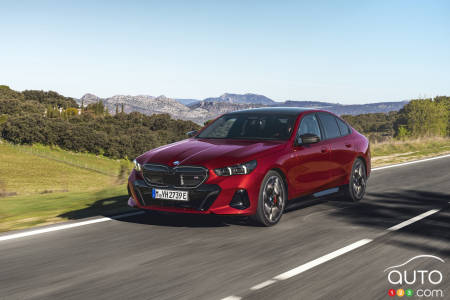
The exterior design of the BMW i5 is characterized by a combination of modern, aggressive lines, with angular headlights and taillights. The model is also distinguished by its Illuminated Kidney Grille and 21-inch wheel options. The vehicle's silhouette evokes that of the traditional 5 Series models, while incorporating a sporty touch.
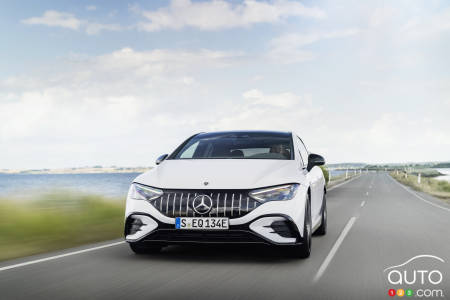
The Mercedes-Benz EQE, on the other hand, sports a large Mercedes star at the front, and is clearly distinguishable from previous or current E-Class models, with a design that underlines its uniqueness within the EQ electric range. The vehicle has flowing, modern lines, but is clearly less sporty than the BMW.
Our verdict: the sporty side of the i5 seems more interesting to us, while the EQE still looks too conservative.
Interiors of the BMW i5 and Mercedes-Benz EQE
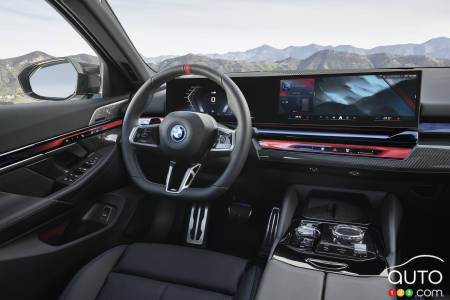
The interior of the BMW i5 is designed to combine technology and comfort. It includes advanced adjustable seats for optimum customization of the driving position, high-quality materials and adjustable ambient lighting. The infotainment and navigation system is modern, aiming to provide a fluid and integrated user experience.

As for the Mercedes-Benz EQE, its interior is characterized by the 56-inch MBUX Hyperscreen, a curved screen that spans the entire width of the dashboard. This monster integrates three displays: instrumentation, a central touchscreen, and a passenger screen. The system uses artificial intelligence to adapt to user preferences, offering personalized functionality and enhanced ease of use.
Our verdict: the interior of the EQE is better than that of the i5. The BMW's dashboard-mounted screen doesn't strike us as an attractive integration. Inside the EQE, everything seems to be in its place and very well laid out.
Technology in the BMW i5 and Mercedes-Benz EQE
Both vehicles offer advanced safety and comfort features, such as adaptive cruise control, which coordinates speed with road conditions for safer driving. They also feature high-quality audio systems, and heated seats and steering wheels, enhancing on-board comfort.
The BMW i5 is equipped with a curved display that combines a 12.3-inch instrument cluster with a 14.9-inch central information screen. This system can be controlled via voice, touchscreen or iDrive touch controller. BMW has also incorporated an updated user interface to simplify access to common functions, making navigation and access to controls more intuitive. In addition, the freeway driving system enables hands-free driving at speeds of up to 137 km/h.
In addition, the Mercedes EQE uses the MBUX system, which learns from the driver's habits to adjust various driving and comfort parameters. This advanced system can respond to context-sensitive voice commands to adjust functions such as heating, according to passengers' verbally expressed needs. This offers extensive personalization and intuitive interaction with the vehicle, simplifying access to a multitude of options without the need for complex menu navigation.
Our verdict: we preferred the BMW system, which is easier to handle and manage than the MBUX. The latter, even though we've driven several Mercedes-Benzes equipped with the system in the past, remains more complicated to get to grips with. Fortunately, voice control works extremely well to help the driver play with the climate control and multimedia systems.
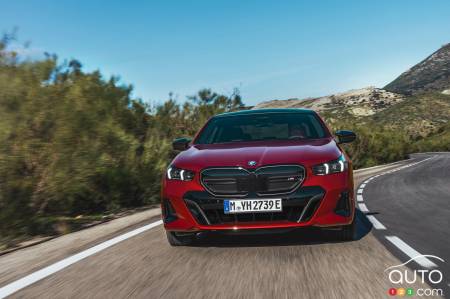
Powertrains of the BMW i5 and Mercedes-Benz EQE
The BMW i5 comes in two main variants. The i5 M60 xDrive model features a dual powertrain with a combined output of 590 hp and 586 lb-ft of torque. This configuration delivers acceleration from 0 to 100 km/h in just 3.7 seconds.
The i5 eDrive40 version is equipped with an electric motor producing 389 hp and 295 lb-ft of torque, enabling acceleration from 0 to 100 km/h in 5.4 seconds. These models are powered by an 83.9 kWh battery offering a range of up to 582 km.
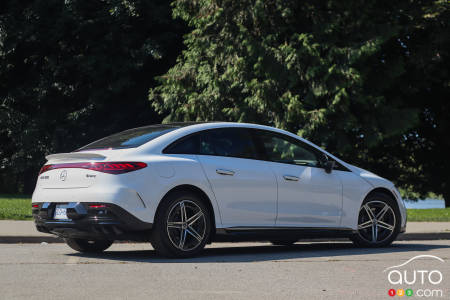
Mercedes' EQE range offers several configurations, from the EQE 350 with 288 hp and 417 lb-ft of torque, accelerating from 0-100 km/h in 6.4 sec. The E500 produces 500 hp and 633 lb-ft for a 0-100 km/h time of 4.5 sec.
Our test model, the AMG EQE, delivers 617 hp and 738 lb-ft for a 0-100 km/h time of 3.3 sec.
Needless to say, the power offered by each of our two test vehicles was nothing short of impressive, ensuring a dynamic driving experience. Technologies such as regenerative braking and thermal management systems optimize performance and battery life.
Our verdict: a tie.
Driving the BMW i5 and Mercedes-Benz EQE
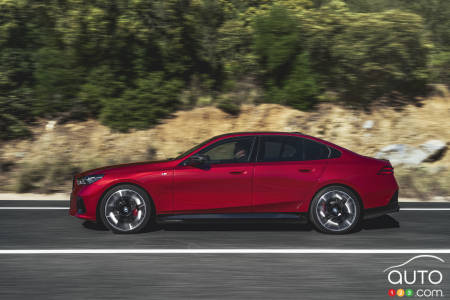
Over the course of a week's daily use, our experience with the BMW i5 M60 and Mercedes-AMG EQE revealed some unique driving aspects of these two luxury electric cars.
The BMW i5 M60 and Mercedes-AMG EQE redefine driving sensations with their technological innovations and electric performance. These models offer optimum grip and maneuverability even on our roads, thanks in particular to their four-wheel steering and damping system, which facilitates maneuvering and absorption of all kinds to make the journey as pleasant as possible.
However, the steering feel differs between the two models: the EQE offers steering that can feel a little heavy, while that of the i5 is lighter and more responsive, giving the impression of a smaller, more agile car despite its size. This characteristic makes the i5 particularly pleasant to drive in tight spaces or urban environments. No doubt about it, this is still a BMW.
In terms of comfort, the BMW i5 excels here too, with seats offering numerous adjustments and firm support.
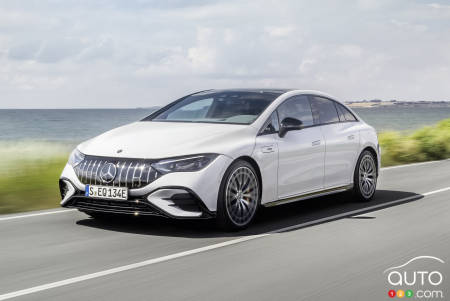
The Mercedes EQE, with its sporty seats and fewer side bolsters than the BMW, generates a rather soft, gentle ride. By activating Sport mode, the suspension becomes firmer, but the feel of the softer seats somewhat attenuates the sporty side of the EQE.
Electrification brings a smoothness and serenity that combustion engines can't match. As a result, both cars offer a quiet, soothing ride, particularly appreciable on the freeway. The EQE's adaptive suspension remains supple, reinforcing its limousine character, while the i5, even in comfort mode, will make us feel the unevenness of the road. In BMW's defense, this is also due to the use of low-profile tires.
But the decision here will depend on the type of driving you'd like to have, a dynamic driving style or one that absorbs the road's imperfections.
Our verdict: The i5 is ahead of its time.
Canadian prices for the BMW i5 and Mercedes-Benz EQE
So far, although the EQE stands out for its superior power, the BMW i5 M60 rivals or surpasses the Mercedes AMG in almost every criterion. However, when it comes to checkout, both cars will immediately let you know that quality comes at a price. Indeed, for 2025, before the fees and any options, the i5 M60 starts at $97,500. Our test model reached the $110,000 mark as equipped. The AMG EQE starts at $121,000.
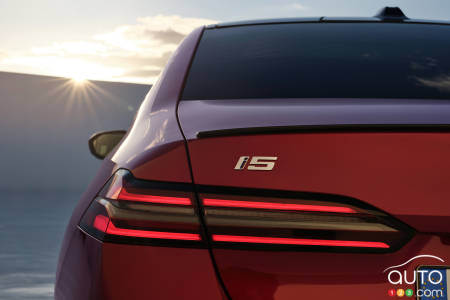
Some of your questions about the BMW i5 and Mercedes-Benz EQE
How does the battery range of the BMW i5 compare with that of the Mercedes-Benz EQE?
For the BMW i5, range varies between 386 km and 412 km, depending on configuration and driving conditions. The Mercedes-Benz EQE has a slightly longer range, from 407 km to 433 km.
What are the charging times for the BMW i5 and Mercedes-Benz EQE?
The BMW i5 can be recharged from 10 to 80 percent in around 20 to 30 minutes, with a maximum speed of up to 205 KW. For Level 2 recharging, the time required for a full charge varies from around 6 to 8 hours.
For the Mercedes-Benz EQE, fast charging can be carried out at up to 170 kW, enabling the battery to be recharged from 10 to 80 percent in 32 minutes. If you use a Level 2 charger, this can take up to 8 hours.
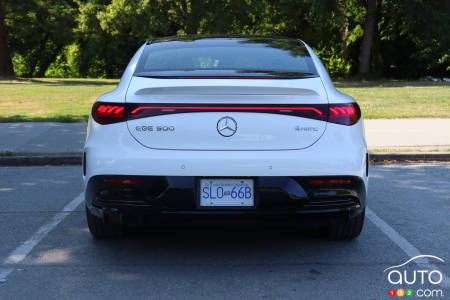
The final word
When comparing the BMW i5 and Mercedes-Benz EQE, each vehicle shines according to the buyer's specific expectations.
The BMW i5 stands out for its sporty capabilities and dynamic performance. On the other hand, the Mercedes-Benz EQE, while also offering similar performance, is more focused on comfort. The EQE would be the best option for those who prefer comfort and a quiet ride.
Your choice between these two cars will depend on what you value most in a luxury electric car. If sporty performance and a more dynamic driving feel are paramount, the BMW i5 wins out. If you prefer superior comfort and a more relaxed driving experience, the Mercedes-Benz EQE could be the smarter choice.
BMW i5
Pros
- - Dynamic driving
- - Use of the multimedia control system
- - Sporty performance and competitive range
Cons
- - Smaller interior than EQE
- - Dry ride
- - Cost of options
Mercedes-Benz EQE
Pros
- - Excellent integration of technology
- - Luxurious ambience and finish
- - On-board space
Cons
- - Use of technology
- - Cost of options
Commpetitors of the BMW i5 and Mercedes-Benz EQE
- - Tesla Model S
- - Audi e-tron GT
- - Porsche Taycan
- - Lucid Air






